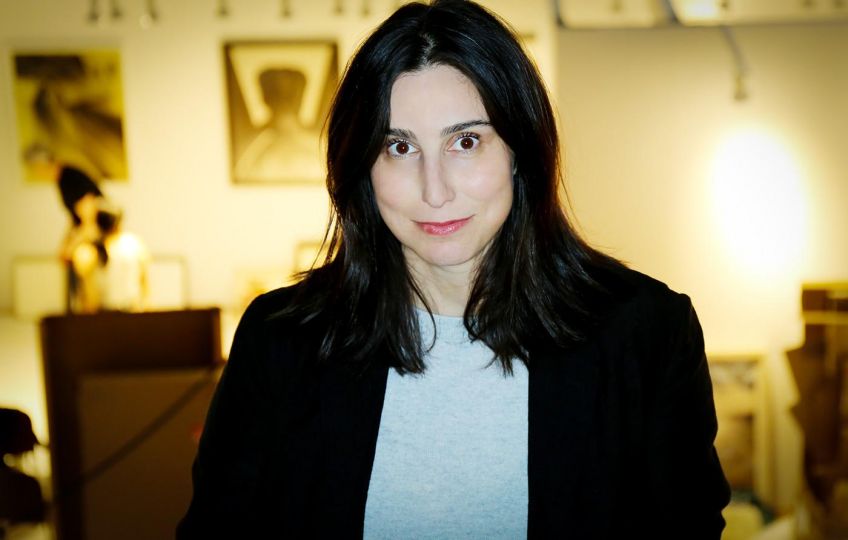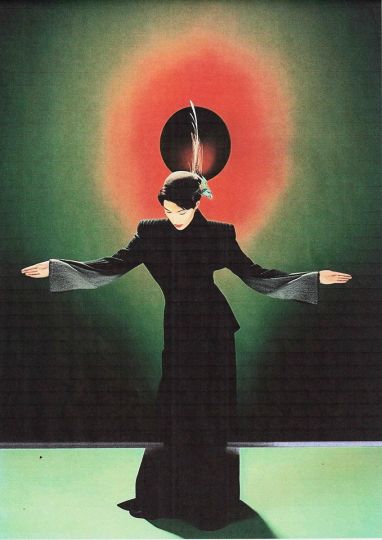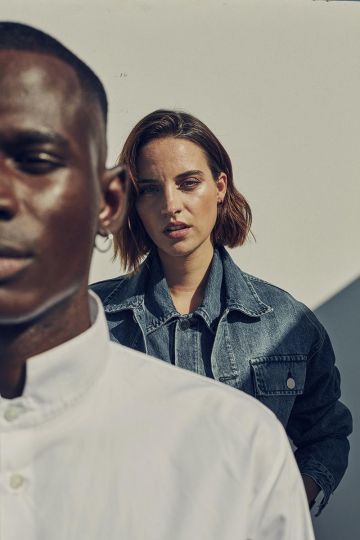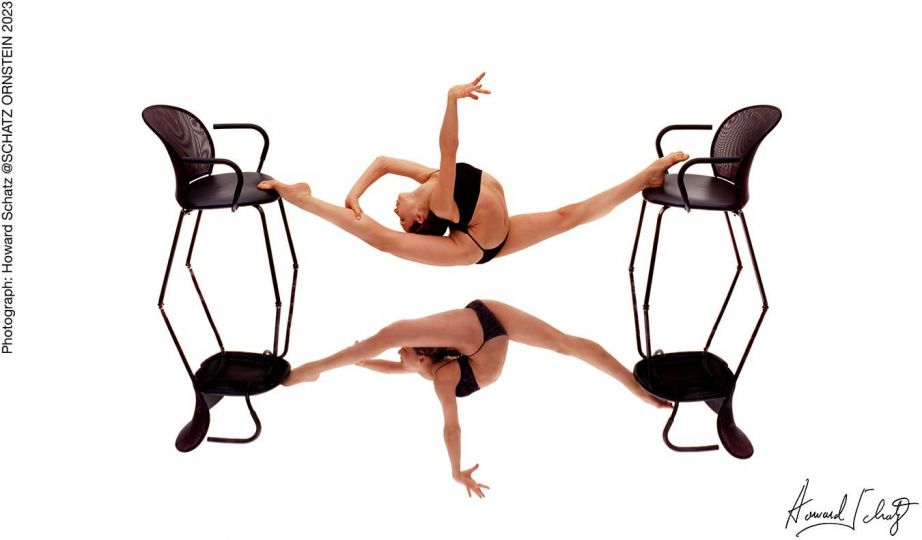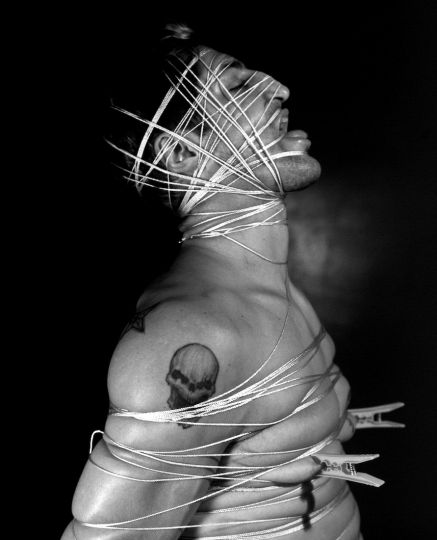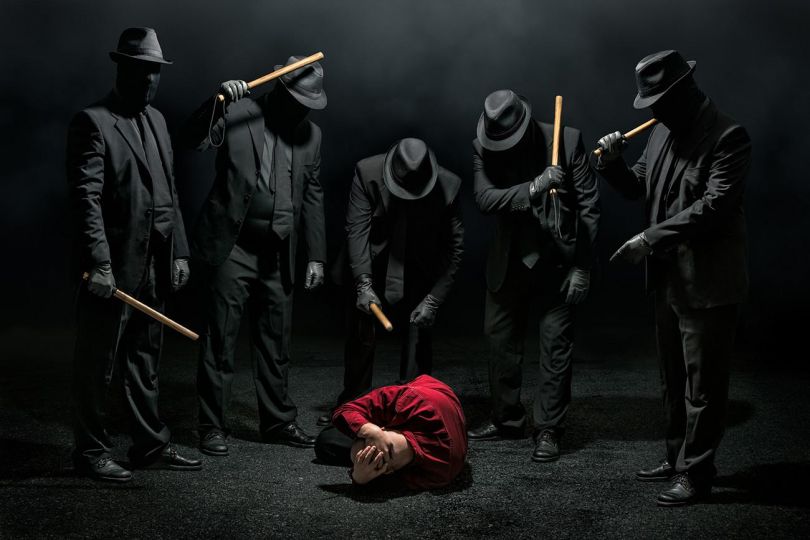It’s hard to describe Mary Russell in just a few words.
She was a famed editor for Glamour and American Vogue in the 1960s and ‘70s, a close friend of Yves Saint Laurent, the girlfriend of Gunter Sachs, a true cosmopolitan, a style-icon, and a fabulous photographer. For decades, she has used photography to document her life and work, first in Paris and then New York, alongside the biggest names in fashion (YSL, Gianni Versace, Missoni, Karl Lagerfeld…), photography (Helmut Newton, Peter Beard, Bruce Weber, Frank Horvat…) and iconic artists such as Andy Warhol.
Luckily, instead of presenting her photographic treasures in the fleeting and oversaturated world of social media, Russell decided to publish them in a book – and thanks to the legendary gallerist Pierre Passebon, into an exhibition, which recently opened in Paris.
Just one day before the official release of her book Entre Nous, we met in Paris to talk about the past, the world of fashion, how “the family” worked, and why her photographs are only on view now.
Nadine Dinter: Your book Entre Nous was recently published, a photo memoir from the 1960s and ‘70s. How long have you been working on this, scanning images, reviewing letters, and writing down those precious memories?
Mary Russell: Good question. I think I started working on the book 1,5, or even 2 years ago. It was my dear friend, photographer Bruce Weber who first saw these images and gave me the courage to pursue this adventure. Because I consider myself an artist, and so relate to these pictures and my gut love and belief in them… but still there is a deep personal fear, some self doubt… When you have lived a happy fulfilled and long life, it is important to desire recognition for the very personal thing that somehow defines you and that you have somehow managed to keep and put together.
Why did you decide to release the book now? Did you need time to reflect on things, or had this being lying on the shelf for some time already?
MR: Timing is everything in life. I have an instinct and a feeling for when it´s the right time. There is a love out there, for nostalgia. It´s happening in the world of art as well as in the world of fashion. Time is very much in flux right now, but I met the right people I admire to encourage me to go ahead.
In the ‘60s and ‘70s you witnessed Yves Saint Laurent push the boundaries of fashion with his first ethnic pieces as well as his famous “khaki” look. Shortly after that, Vivienne Westwood and Malcolm McLaren opened their SEX boutique in London – you might say that a Europe was experiencing a fashion revolution … Do you feel that such a phenomenon is still possible today or is fashion merely repeating itself?
MR: There was a big political and social upheaval which also changed the art world forever. The 60s was the period of Woodstock, the Beatles, a movement in itself. Those artists, like YSL and Westwood directed our break-away from the existing structure. They were both extremely cultured in the arts and very well educated. That´s what made them so powerful. Fashion usually follows along with revolution. Even now, it´s happening. But not in ways that everyone expects!
It´s now all about the internet- fast media, Instagram- where I scroll several times a day,-our digital image magazine. Insta fashion, insta visuals. Politics, sport, music, film. The media itself. Fashion is huge business today. Great designers like John Galliano, Yojhi Yamamoto, Vivienne Westwood, and Todd Oldham are still fast at work creating newness in the world of fashion.. There’s a big vintage revival. Keeping and finding old favourites to mix with insta Uniqlo or Zara inexpensive add ons.
Being close friends with YSL and hanging out with Versace, weren’t you given some amazing couture pieces through the years? Are they in storage or what have you done with all that gorgeous memorabilia from the past?
MR: I ‘m blessed to be tall and thin. YSL, Versace, as well as many designers I worked would gave me clothes. Yves made me couture dresses and chic men’s wear smokings to wear to parties, with him as my chevalier. Designed for me. Gianni Versace was divine. I was born for his black leathers. The dark side of fashion. I have donated most of these treasures to the Costume Institute at the Metropolitan Museum in New York as well as the YSL Museum in Paris.
Places like Café de Flore and Brasserie Lipp were among the locations where “the family” met, celebrated, and spent time together. What are those places like today? Are they still frequented by local artists and insiders?
MR: Today, they are frequented mostly by tourists. Unfortunately, Saint Germain de Près has become a bit of a tourist trap. I still love and frequent “the Flore” and “Lipp”, reliving in my imagination those halcyon days when these two iconic spots across the street from each other were our meccas of delight. At certain codified hours you still might spy an old time regular downstairs inside at the Flore. And the Maitre D chez “Lipp” has a keen memory and will seat his picks according to his own infallible secret door policy.
In your book, you mention that your camera was a great tool to attract certain men and personalities around you. But how did you manage to take all those amazing photos, such as of Warhol with his wig and with a group of friends frolicking in bed, or going on tour with Gunter Sachs, and capturing private moments with the schedule-maniac Karl Lagerfeld? Were VIPs more at ease back then and more accessible? Or was this the essence of what you describe as “entre nous”?
MR: It was the essence indeed. We were all close friends, pals. There was time to play, there were no schedules. It was all about being together for work and our endless nights out. Andy brought his polaroid camera everywhere. He was the first person I ever saw taking pictures of everyone around him. There was no media, not many paparazzi. Hard to believe today. There were no velvet ropes or VIPs. That description was far in the future and none of us was especially famous. YET. Don’t forget I was working for Glamour and American Vogue, and later WWD in Paris. Calling cards to open doors but it was the intimacy of becoming good playful friends that allowed the joyful insouciance of the photos.
The magazine world has also changed over the years. How do you feel about Glamour and Vogue nowadays?
MR: The world of magazines as we knew it, was in the golden age. With the advent of the internet, those who have not understood digital interconnection must evolve. I have Diana Vreeland and Alex Liberman to thank for my career and for the great years at Glamour and Vogue. There are still beautiful Vogues all over the world and some terrific, edgy, come-and-go magazines out there. I find them on Instagram, where I check in every morning with my morning coffee. But for my rapid eye and brain its all digital unless I want to collect and keep a special magazine or book.
Your passionate but non-sexual friendship with YSL is another beautiful, breathtaking chapter in your book. How did your friendship evolve over the years?
MR: It was magical from the first meeting, we connected on every level. And the fact that he was homosexual was a blessing and allowed us to get even closer and become friends. There was a freedom, there was true love, complicity, humour, and affection. Intimate but not sexual. I adored his partner Pierre Bergé, and the closeness between us is evident in the book. I left Paris in 1980 to work and live in New York. A pivotal time though none of us was prepared for it. Our friendship remained in our hearts, minds and memories, but the excesses of the 80s themselves along with the exigant stress of fame overcame so much in our sweet world. Our friends and working collaborators were dying of AIDS. Everything changed. Forever.
Were you part of the team when Helmut Newton took the famous shot of YSL smoking on Rue Aubriot? What was it like working with Newton? You mention a shoot with Charlotte Rampling…
MR: No, I was not the editor stylist on that particular shooting. But working with him at his Rue Aubriot studio or the shooting with Charlotte Rampling in Cannes in the 70s or other location shootings was common fare for us. I now realize that this was perhaps one of the most important learning times of my working creative life. He encouraged my photography, allowed me to photograph him as he was at heart, a true performer. Helmut was generous. He taught me discipline and fantasy, and the magic and spontaneity of getting the photograph at all costs. I loved his dark sexy side. He was extremely respectful of the models even while taking very sulphurous pictures. He like me, and Andy, like hiding behind the lens. It is there that our fantasy reigns supreme!
What made “the family” so special? What was its credo and motto?
MR: Living together. Finding kindred playful souls. Loving fashion, beauty, art, and the freedom we were living. Laughing. No shame, no fame, no bullshit, no blame. We all hit it off. Just blissfully happy to be there, not yet knowing that we were living a very special moment in history. In a small enough atmosphere where no-one was in a hurry to be anywhere or anyone. Sure there was work- we loved our work, but it was defined by our lifestyle. There was a secret complicity of the immediate carefree pleasures of our youth.. We were like children. Sharing our secrets and hopes. The credo and motto was already inscribed by songsters: “Live hard, die young.” …. and unfortunately, little did we forsee, that for many of us, that prophetic verse came to pass via sex, drugs, and rock and roll…
What is your advice for young women who want to make it in the fashion world?
MR: Never forget your dream. Go for it. Find yourself in the right place with the people you admire. Get there somehow. Just be there. Find the school you like the most, follow your artistic dream. Arm yourself with the culture of your art; schooling by the masters, try to meet them. Don´t compromise. Find the people who can introduce you to the right people. Make yourself noticed. AND most importantly, try not to take yourself seriously.
Thanks so much, Mary, for taking the time to share your latest thoughts and news with our readers!
Exhibition:
“Mary Russell. Entre Nous. 1960 – 1970”
on view at Galerie du Passage, 20/26 galerie Véro-Dodat, 75001 Paris, through December 21st, 2019
Book:
Mary Russell: Entre Nous: Bohemian Chic in the 1960s and 1970s, published in English/French by Flammarion, edited by Pierre Passebon, 161 x 225 cm, 112 pages, 25,00 EUR, EAN: 9782080204110



